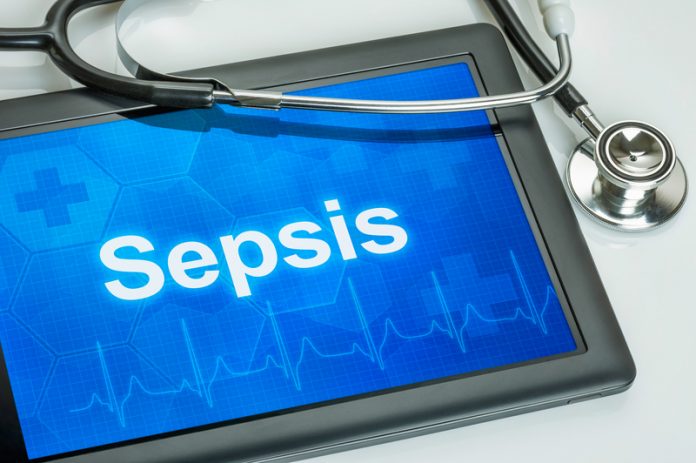Cecilia Van Cauwenberghe from Frost & Sullivan’s TechVision Group discusses the concerns with overcoming challenges in sepsis diagnosis
Sepsis is a rapidly progressing, life-threatening inflammatory syndrome that occurs as a result of a local infection leading to the systemic disruption of the host’s immune responses and coagulation reactions. According to the World Health Organization (WHO), which declared sepsis a global health priority, more than 30 million people worldwide every year develop sepsis syndrome, which potentially leads to 6 million deaths (WHO Fact Sheet, 2018). Low- and middle-income countries account around 3 million newborns and 1.2 million children suffering from sepsis every year (WHO Report, 2017).
Factors influencing the extent of inflammation are significantly heterogeneous. The site and cause of initial infection and the timing of support administration constitute the most relevant aspects to take into consideration. Therefore, most clinical trials attempting to target specific signalling pathways disrupted by sepsis fail. Indeed, no specific therapeutic options are available at present days (Leligdowicz and Matthay, 2019).
Regarding diagnostics, different individuals mostly exhibit immune paralysis, endothelial injury and multiorgan failure, as the most frequently observed aspects. Nevertheless, the underlying mechanisms responsible for these signs are still poorly understood. Consequently, clinical verdict is based on comprehensive physiological parameters and time consuming lab-based cell culture. These facts constitute critical issues for a condition that can severely increase over a short period of time.
The development of innovative methods for sepsis recognition and compliance with treatment urgency represent an increasing concern among the clinical community. According to the experts, the challenge relies on the subjectivity of sepsis related to the absence of a pathological gold standard. However, the implementation of administrative codes to track sepsis, including screening and retrospective audits, may increase the likelihood evidence sepsis cases at an early stage, hence helping to diminish sepsis mortality rates (Rhee et al., 2019).
Opportunities and solutions
Because of the high risk of death associated with uncontrolled sepsis, the development of a new point of care testing (PoCT) tools for sepsis may constitute a remarkable solution. PoCT devices could not only increment diagnostic speed and accuracy but also provide timely administration of best-fit therapeutics (Oeschger et al., 2019). This strategy would significantly reduce risks while enhancing patient outcomes. The healthcare burden would be drastically diminished as well.
Similarly, hospitals and care centres are beginning to use of machine learning algorithms on continuous streams of physiological data with the purpose to early identify patients in risk of developing sepsis with high accuracy in real-time (van Wyk et al., 2019). The risk of sepsis (RoS) score was developed based on the systemic inflammatory response syndrome (SIRS) and the sequential organ failure assessment (SOFA), among other standards (Delahanty et al., 2019), with the aim to provide a more opportune and reliable tool than single benchmark screening tools.
Smart healthcare solutions such as PoCT devices and machine learning algorithms enable data to be analysed, visualised and shared in real time; thus, significantly improving clinical outcomes (Van Cauwenberghe, 2016).
Final remarks
Host disease presentation defines the course of treatment in sepsis. The inherent heterogeneity associated with this condition remains a critical concern to promptly dispense immunosuppressive or immune augmenting therapies. Best efforts are associated with early stage, on-site diagnosis, as well as, the implementation of machine learning methods for risk scoring. A long road is still left to achieve definitive solutions for sepsis treatment.
Acknowledgements
I would like to thank all contributors from the industry involved with the development and delivery of this article from the TechVision Group at Frost & Sullivan.
References
1 Delahanty, R.J., Alvarez, J., Flynn, L.M., Sherwin, R.L. and Jones, S.S., 2019. Development and Evaluation of a Machine Learning Model for the Early Identification of Patients at Risk for Sepsis. Annals of emergency medicine, 73(4), pp.334-344.
2 Leligdowicz, A. and Matthay, M.A., 2019. AIMing Immunomodulation Therapy at Sepsis.
3 Oeschger, T., McCloskey, D., Kopparthy, V., Singh, A. and Erickson, D., 2019. Point of care technologies for sepsis diagnosis and treatment. Lab on a Chip, 19(5), pp.728-737.
4 Rhee, C., Dantes, R.B., Epstein, L. and Klompas, M., 2019. Using objective clinical data to track progress on preventing and treating sepsis: CDC’s new ‘Adult Sepsis Event’surveillance strategy. BMJ Qual Saf, 28(4), pp.305-309.
5 Van Cauwenberghe, C. 2016. Technologies Empowering Smart Healthcare – The Optimal Synergy Between Leading-Edge Hi-Tech and Digital Innovation. Frost & Sullivan Research Service. TechVision. D74F.
6 van Wyk, F., Khojandi, A., Mohammed, A., Begoli, E., Davis, R.L. and Kamaleswaran, R., 2019. A minimal set of physiomarkers in continuous high frequency data streams predict adult sepsis onset earlier. International journal of medical informatics, 122, pp.55-62.
7 World Health Organization. WHO Report on the burden of endemic health care-associated infection worldwide. 2017-11-21 15:11:22 2011.
8 World Health Organization. Fact sheet: Immunization coverage. 2018-04-10 14:55:37.
Cecilia Van Cauwenberghe, PhD, MSc, BA
Associate Fellow and Senior Industry Analyst
TechVision Group, Frost & Sullivan











